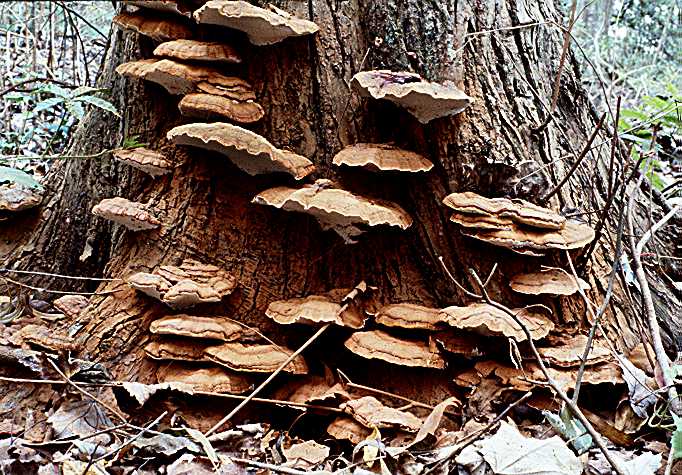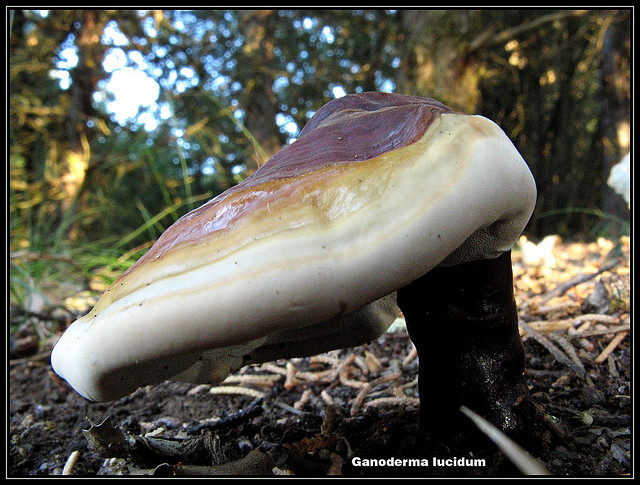Adaptation
Like all fungi, G. lucidum has made a few adaptations to help increase its success in its habitat.
One advantage that all fungi including G. lucidum, share is the fact they don’t rely on photosynthesis for
the production of their food.
Since they are saphrophytes, they can continue to gather
food whether it is light or dark out, something that plants
certainly can’t boast about.
All fungi have walls made of chitin, which
gives them a strong and sturdy support system.
Because of the chitinous cell walls, fungi can’t move
around very quickly.
Instead they tend to work their way through a food source
with a number of hyphal tips.

Another adaptation that G. lucidum is the production of mushroom. It's the mushroom that releases the spores into the wind to be spread into new territory. Depending on the location of the fruiting body, the mushroom produced can either be in a conk or stalked mushroom form. The stalked mushroom is the typical style that is thought of when talking about mushrooms, while the conk is the type of mushroom that grows on the sides of trees.
One specific advantage that G. lucidum has that does not apply to all fungi is the fact that it is a coenocytic fungi. This means that its hyphae cells aren’t divided, which allows cell organelles to freely flow throughout the hyphal strand. This also means that the fungi can go can produce many new nuclei without having to perform cytokinesis.
Check out all of the ways G. lucidum gets its food in the Nutrition section
Back to Habitat Ganoderma lucidum Home